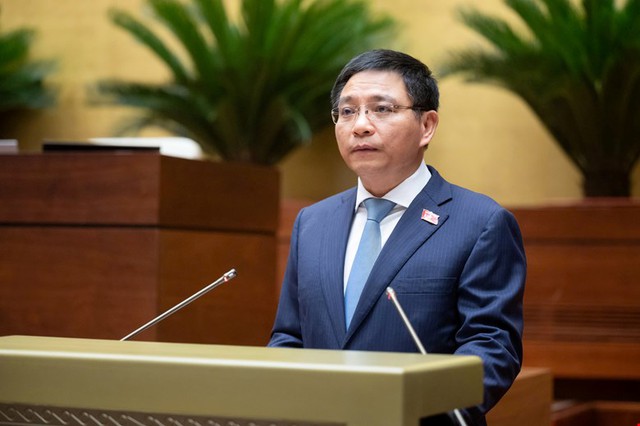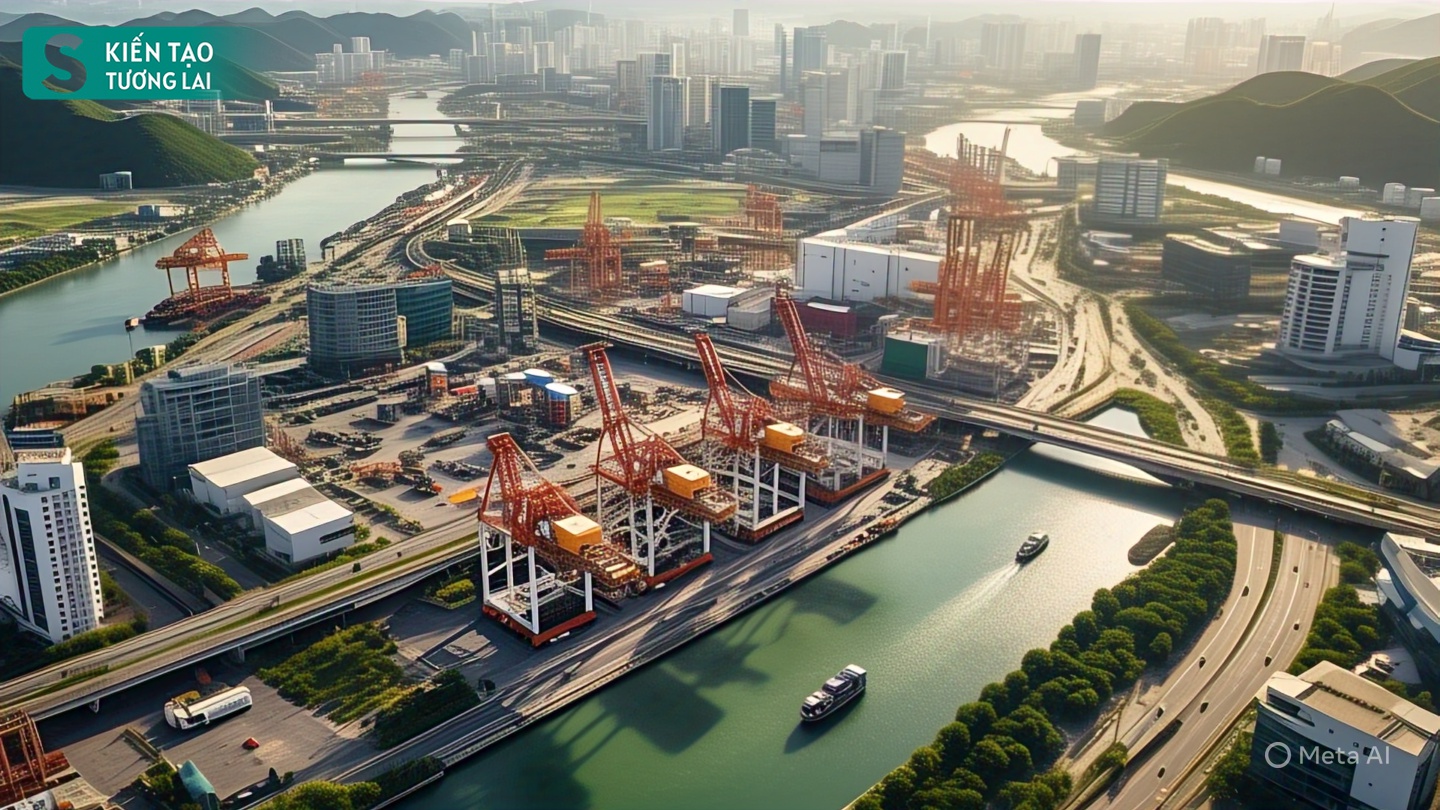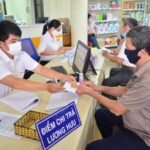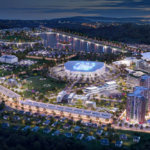On May 13, 2025, Minister of Finance Nguyen Van Thang presented to the National Assembly a draft resolution on pilot mechanisms and special policies to develop Hai Phong city, including a proposal to establish a Free Trade Zone in this port city. This move is considered a strategic step to promote Hai Phong as the country’s center for maritime economy and high technology.
According to the proposal presented by the Ministry of Finance, the Hai Phong Free Trade Zone will be developed on an area of approximately 6,300 hectares, including functional areas belonging to the Dinh Vu – Cat Hai Economic Zone, part of Cat Hai Island, and the southern coastal area of the city. This area has a geographical advantage, superior port infrastructure, transportation connections, and potential for logistics services development.
The free trade zone model will be organized into multiple functional subdivisions, such as production, port and logistics, international trade and services, and sections dedicated to research and innovation.

Minister of Finance Nguyen Van Thang presents the proposal to the National Assembly – Photo: NLD
A notable aspect of the proposal is the application of special mechanisms in finance, taxation, land, labor, and administration. Notably, research and development (R&D) expenses are deductible at 200% for tax calculation, and experts, scientists, and talented individuals working in the zone will receive a 50% reduction in personal income tax.
Enterprises in the free trade zone may list, price, and make contract payments in foreign currencies—a precedent in Vietnam. They are also permitted to engage in transshipment of goods. Additionally, foreign banks are allowed to open transaction offices in the zone without being attached to their head offices.
Foreign experts, scientists, managers, highly skilled workers, and their families will be exempt from visas and granted 10-year residence cards.
Projects within the Hai Phong Free Trade Zone (excluding commercial housing) will be allocated land without going through auctions or bidding. Land use will not be constrained by national land-use allocation indicators. The Hai Phong People’s Committee is authorized to revoke land for projects in the zone, similar to projects of national interest.
The country’s largest free trade zone with the potential to become “Vietnam’s Dubai”
Currently, there are three Free Trade Zones (FTZ) in Vietnam. The FTZ in Danang has been approved by the National Assembly through Resolution 136/2024/QH15 and is in the process of being submitted to the Prime Minister for approval of the detailed proposal. The Hai Phong FTZ was recently presented to the National Assembly in May, and the Ba Ria – Vung Tau FTZ is in the process of developing its proposal.
| Criteria | Hai Phong FTZ | Danang FTZ | Ba Ria – Vung Tau FTZ |
|---|---|---|---|
| Legal status | Presented to the National Assembly in May 2025, awaiting approval | Finalizing for submission to the Government | Proposal under development |
| Expected area | 6,300 – 6,470 hectares | ~1,700 hectares | ~3,749 hectares |
| Priority sectors | High technology (AI, semiconductors), logistics, finance, international trade | Logistics, IT, digital services, trade | Green logistics, transshipment port, green production |
| Strategic goals | Northern hub for exports, logistics, and high technology | Central hub for logistics and service digitization | Southern hub for maritime economy, exports, and international logistics |
| International strategic partners | Proposed connection with Yunnan FTZ, China | Proposed cooperation with Japan and South Korea | Strategic cooperation with DP World (UAE) |
Comparison table generated by AI
According to the table, among the FTZs being implemented or proposed, the Hai Phong FTZ has the largest scale, the most breakthrough mechanisms, and the clearest vision.
The Hai Phong Free Trade Zone is expected to cover an area of 6,300 – 6,470 hectares, five times larger than the Danang FTZ and twice the size of the proposed Cai Mep Ha (Vung Tau) FTZ. This figure not only reflects ambition but also the feasibility of a super complex of industry, commerce, ports, and high technology.
The spatial structure of this FTZ is planned in a “triple-pillar” form: the southern coastal economic zone, focusing on logistics and high-tech industries; Nam Dinh Vu, linked to horizontal transportation infrastructure; and Cat Hai Island, home to Lach Huyen deep-water port, capable of accommodating container ships over 100,000 DWT.
The selection of these strategic areas indicates that Hai Phong is building an ASEAN-scale logistics and export center, directly connected to international maritime transport chains and the Kunming-Hanoi-Hai Phong economic corridor.

Illustration of Hai Phong Free Trade Zone created by AI Meta
Notably, unlike traditional economic zones that focus solely on tax incentives, the Hai Phong FTZ proposal includes 17 super-preferential policies, many of which are being introduced in Vietnam for the first time. This reflects the “daring to think and unlock” mindset of central and local authorities. The critical point is not just the incentives but the special implementation mechanisms. The draft resolution assigns the Hai Phong Economic Zone Management Board to implement a “one-door, on-site” mechanism, meaning they can approve investments, issue certificates of origin (C/O), and handle retail, labor, and capital transaction licenses independently. They will also be deeply authorized by central ministries and sectors.
This organizational structure resembles successful free trade zone models worldwide, such as the Changi FTZ (Singapore), which integrates trade and airport functions; Jebel Ali FTZ (UAE), the largest export hub in the Middle East; and Shanghai FTZ (China), the first to pilot free foreign exchange conversion.
| Criteria | Hai Phong FTZ | Jebel Ali FTZ (UAE) | Singapore FTZ (Changi, Jurong) | Shanghai FTZ (China) |
|---|---|---|---|---|
| Area | ~6,300 ha | ~5,000 ha | <500 ha | ~120 km² |
| Foreign currency transactions | ✅ Allowed | ✅ Comprehensive | ❌ Only partial | ❌ Controlled by Central Bank |
| Residence policy for experts | ✅ 10-year residence card, visa-free | ✅ Long-term residence visa | ❌ Short-term residence | ❌ Restricted |
| Financial liberalization | ✅ Foreign currency transactions, payments | ✅ Free capital and foreign exchange | ❌ Dependent on MAS | ❌ Strictly controlled |
| Administrative management | ✅ “One-door, on-site” mechanism, strong decentralization | ✅ Independent government within FTZ | ❌ Under central ministries | ❌ Limited local decentralization |
| R&D and high-tech functions | ✅ AI, semiconductors, strategic R&D | ✅ Yes, but focused on logistics | ✅ Strong in logistics and IT | ✅ Yes, but separated into multiple functional areas |
| Level of tax incentives | Very high (10% CIT/30 years, land exemption) | Very high | Moderate | Present but limited |
Comparison table generated by AI
Similar to how Dubai rose from a small Gulf port to a global logistics hub through the Jebel Ali FTZ, Hai Phong—with its deep-water port, synchronized infrastructure, and Northeast Asian gateway location—has the potential to become the region’s new “international transshipment hub.”
Unlike traditional FTZs in Vietnam, the Hai Phong FTZ goes beyond tax incentives and aims for comprehensive financial, commercial, and human resource liberalization: foreign currency transactions, visa exemptions for experts, 10-year residence cards, international banks opening branches without headquarter requirements, etc. This is a unique institutional structure—a truly “unlocked” version that facilitates global technology corporations and supply chains to establish their production, research, and distribution centers in Vietnam.
If implemented according to the right direction, Hai Phong will not only be a major port city but also a leading destination for smart logistics, high-tech production, and cross-border services, propelling Vietnam to break through in the global value chain, just as Dubai did for the Middle East.
Thus, there is a basis to assert that in the new national development strategy, Hai Phong can play the role of ‘Vietnam’s Dubai’ in logistics and international trade, serving as a leading ASEAN hub for transshipment, production, and services.
This article and the comparison tables were created with the support of AI applications
“US-China Trade Talks: PM Voices Key Desire”
“The esteemed Prime Minister shared insightful words with a captivated audience of American business representatives investing and operating within the vibrant landscape of Vietnam. This exclusive gathering offered a unique window into the future of economic collaboration and mutual prosperity between our nations.”
The Urban Townhouse: A Surefire Cash Flow Equation in Lao Cai City Center
Located in the heart of the new Lao Cai city, surrounded by a cluster of four social housing apartment buildings housing 10,000 residents, HPX Golden Lao Cai is a business opportunity like no other. With three key infrastructure developments of national strategic importance on its doorstep, it presents an undeniable cash flow equation for 2025 and beyond.





















